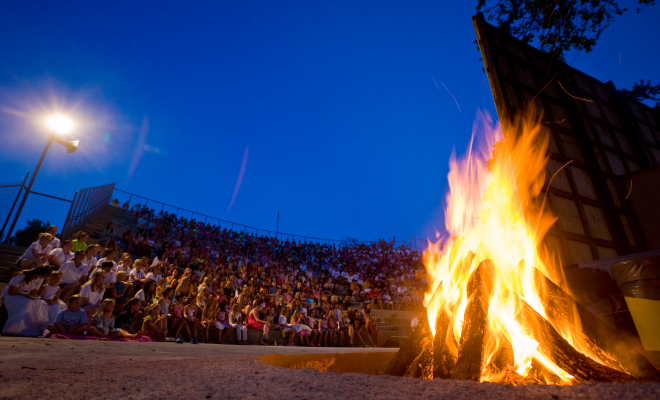
Lifestyle
Camp Longhorn – A camp like no other on the shores of Inks Lake
By Judith Shabram
The story of Camp Longhorn is the story of a “bigger than life” Texan named Julian “Tex” Robertson. According to an article from the Texas Swimming & Diving Hall of Fame, Tex learned to swim in a flooded creek near Sweetwater, Texas, and practiced in a horse trough, winning his first race the following year. Only 15 years old, Tex moved to California and honed his swimming skills at the Los Angeles Athletic Club, training alongside superstars Buster Crabbe and Johnny Weissmuller. Tex participated in the 1932 Summer Olympics as an alternate on the water polo team and brought home a bronze medal. He continued to set National records individually and in the team competition at the University of Michigan, and in 1936, he trained Olympic Gold medalist Adolph Keifer. The vision for Camp Longhorn resulted from the time Tex spent at Camp Chicopee in Canada, which Michigan and Olympic Coach Matt Mann ran. The experience impressed him so much that he wanted to build one just like it in Texas.

Tex teaching the frogmen
He returned to Texas in 1935 to organize and coach a swim team at the University of Texas, but the school could not pay him. However, he had not lost his vision for a summer camp in Texas and secured a location on Inks Lake through the Colorado River Authority in 1939. Pat, his wife, had never camped a day in her life but told her husband, “Let’s do it.” Since Tex was a “thinker outside the box,” he decided to train his swimmers at Inks Lake in the summer, utilizing their free time to cut a road to the property, and they eventually became counselors. Tex and his wife Pat now needed campers. Their search took them to the phone book, where they were able to secure one willing soul. They would laugh later that they began Camp Longhorn with one and a half campers, one from the phone book, and the half being a neighbor who had a kayak and came for free, counting only as half a camper.
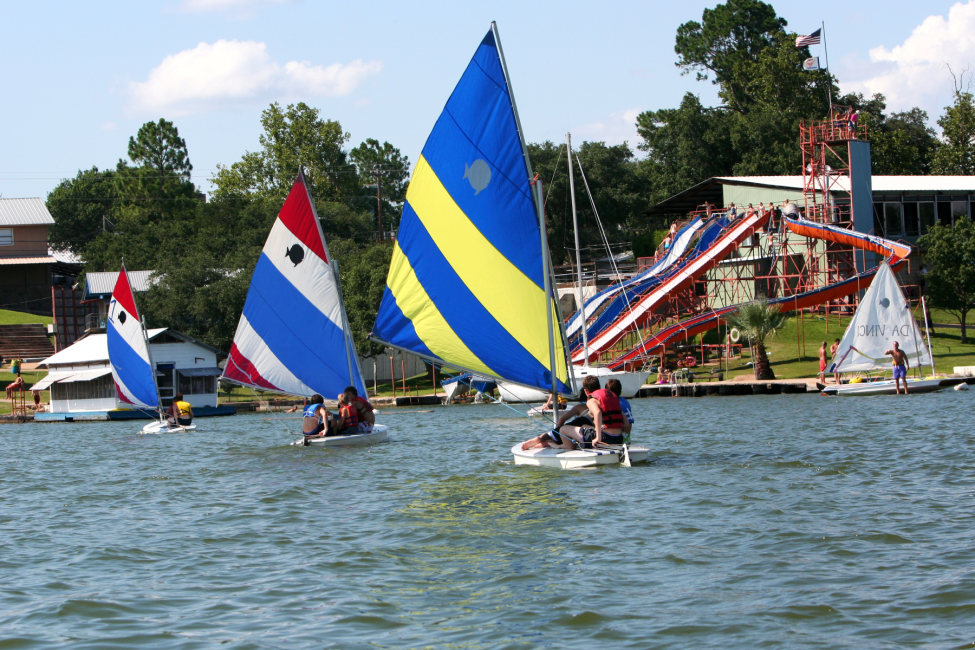
One of the many activities on the water.
Not long after Camp Longhorn started, World War II interrupted the entire world. Tex was called up to train Frogmen, originally the Navy’s underwater demolitions team, and became instrumental in helping to establish what is now the Navy Seals. When he returned to Camp Longhorn, much had changed, and most of the equipment was army surplus. A remnant of that still exists in the form of what is affectionally called the “blob.” The first one was purchased in 1965 and originally served as a gasoline storage bladder, a sort of mobile filling station for the military. A forward-thinking director, Bill Johnson, decided it was safer to fill it with air and put it in the water, creating a forty-foot-long, six-foot-wide water trampoline; the rest is history. The spirit of that original blob is still an integral part of Camp Longhorn, and variations of the blob are now a staple on lakes in summer camps across the country. Tex also invented the Salo (Frisbee games), recognized in The Complete Book of Frisbee.
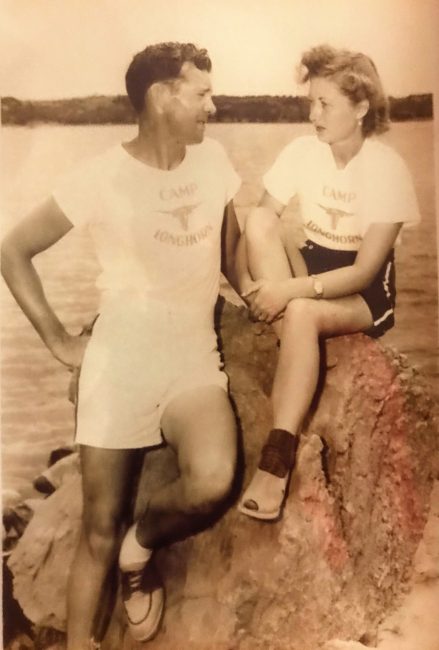
Pat & Tex 1939
Since its inception in 1939, Camp Longhorn has emphasized participation, not competition. Family-owned and operated, the camp stresses traditional values that encourage kids to establish friendships that are often lifelong. At Camp Longhorn, “ everybody is somebody.”
It all began on the shores of Inks Lake, where the constant water levels provide opportunities for abundant water activities like fishing, sailing, swimming, water soccer, or testing your agility by jumping on the world-famous blob. However, the focus is on building self-confidence in a safe and fun environment. Most of the counselors were once campers and remember the unique experiences from their time at Camp Longhorn and want to pass them on to the next generation. Because the focus is on confidence-building outdoor activities, the cabins have no electricity and no air conditioning, also eliminating the use of cell phones and other devices. Instead, the campers survive on what Bill Robertson, Tex’s son, calls “Central Texas Air.” ”Flashlights are used at night, and without technology, the kids communicate via actual “letters from camp.” Some other old traditions are still in place, like cabin inspections and the honor of being the “Office of the Day.”
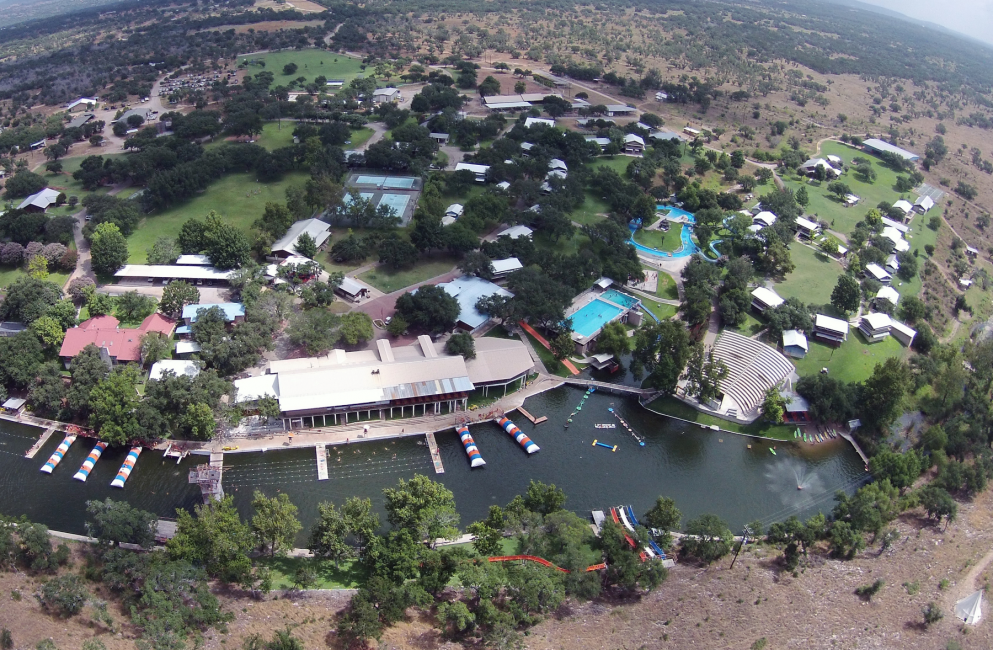
Camp Longhorn now offers 3 locations in Burnet and Llano Counties. In 1975, Camp Longhorn Indian Springs opened on a 300-acre private ranch in the Hoover Valley area of Burnet County. With two lakes, a lazy river, a surf park, and swimming pools, Indian Springs offers some of the same water experiences as Inks Lake, along with horseback riding or mountain biking. C3, the newest camp on Inks Lake, offers the same spirit and traditions Tex and Pat Robertson instituted long ago. Inks Lake and Indian Springs offer two and three-week sessions, while C3 offers one and two-week sessions.
The list of activities at Camp Longhorn is lengthy, whether at Inks Lake, Indian Springs, or C3. In addition to traditional water sports, campers can sample scuba diving, synchronized swimming, water polo, or canoeing. Land sports include football, basketball, pickleball, putt-putt golf, archery, and riflery. They even have a petting zoo. At night, the campers make special memories as they gather around the campfire to watch shows and skits or, on some occasions, enjoy dance nights, movie nights, or a carnival.
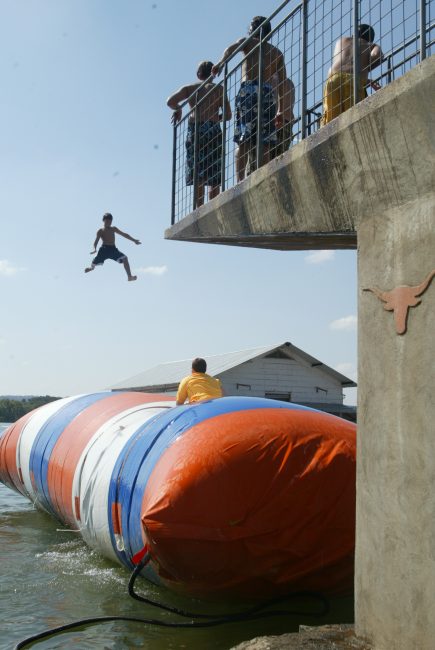
The camps are famous for their meals in the Chow Hall. Barney Baker, a local rancher and builder, has prepared meals since 1955 at the Inks Lake location. He prepares all the favorites like fried chicken, pizza, or baked ham. From the beginning, attention has been placed on participation as the kids learn how to work together. One of the ways this is accomplished is KP duty at Chow Hall, which earns Campers Merits redeemable at one of the three “Merit Stores.”
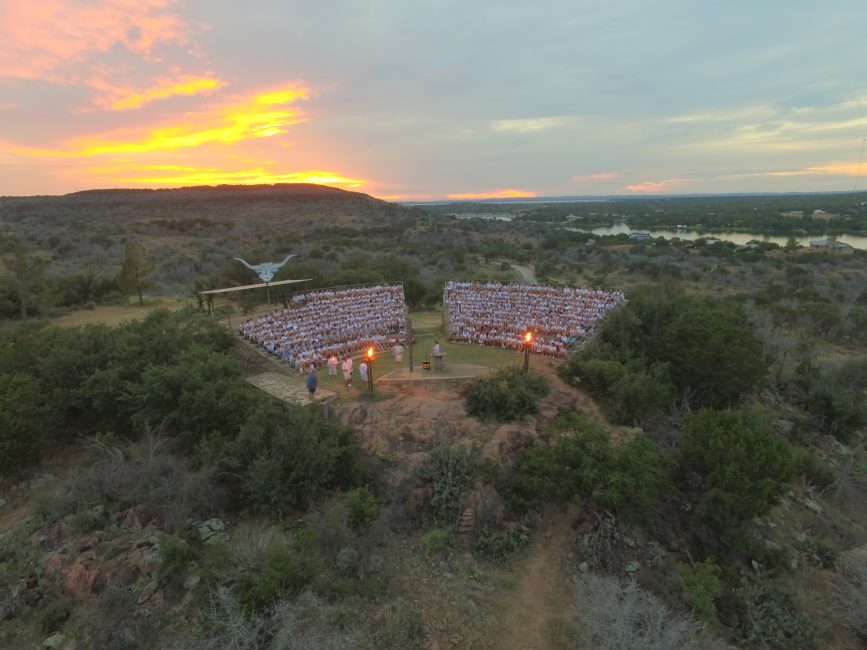
DCIM100MEDIADJI_0021.JPG
Camp Longhorn, celebrating 86 years and counting, is dedicated to the safety and welfare of the children as they impart some valuable life lessons. Members of the Robertson family still operate the camp, honoring the memory of Tex and Pat Robertson and continuing the legacy that sees over 7,000 campers a year. For more information and rates, visit www.camplonghorn.com or call the numbers for the individual camp offices.
Inks Lake – 512-793-2811
Indian Springs – 512-756-4650
C3 Inks Lake – 512-793-2490

